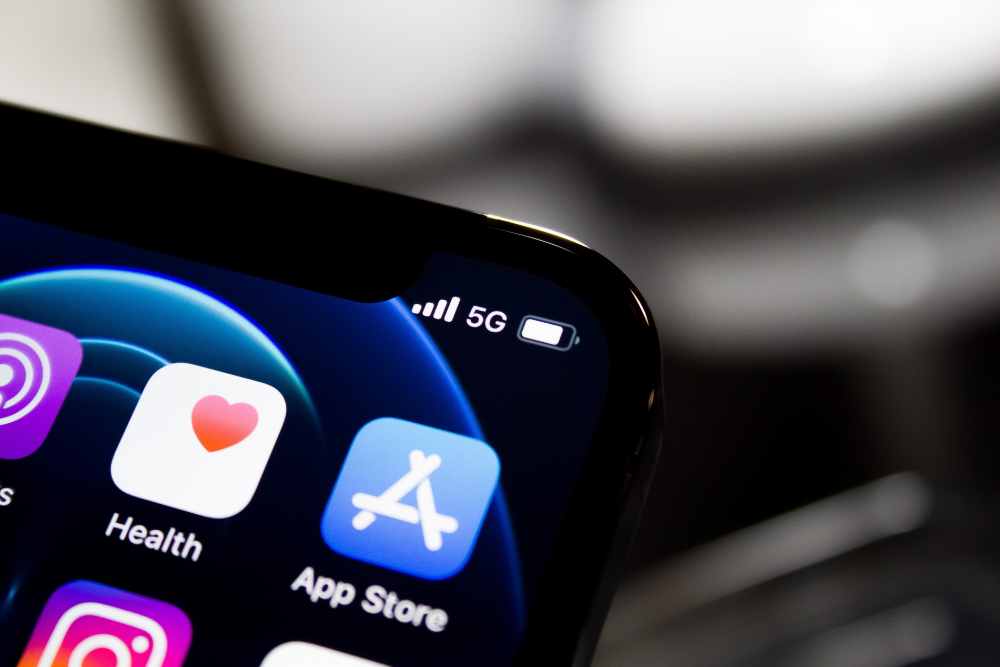5 Ways 5G Will Impact Mobile Advertising
Apple and Google have both officially entered the 5G arena with the recent launches of their flagship 5G-compatible phones. Joining the ranks of the Samsung Galaxy, the iPhone 12 and Pixel 5 offer consumers the opportunity to now experience the speed and responsiveness of 5G with the mobile carrier of their choice.

With the hype and talk of 5G dating back several years now, this moment—strangely enough—feels somewhat anticlimactic. But, the truth is, the promises that 5G presents can very well change the mobile landscape for years to come. The increased speeds and reduced latencies may just be the foundational technology that’ll forever impact innovation across industries and connect consumers to services across any smart device.
Mobile advertising is no exception. Brand marketers should be prepared for the impact 5G will have on their mobile marketing efforts. Following are the top 5 shifts in advertising we are looking most forward to in a 5G-enabled world.
Video Quality
Video advertising has already proven to be the main driver of ad spending growth in 2020 and with speeds up to 20x faster than the current 4G technology, 5G will help unlock accelerated growth through 2024.
Video buffering and load times will drastically be reduced allowing for larger files and higher resolution videos to be streamed to devices. For marketers, each of these elements play a hand in creating an even better overall user experience, allowing for an uninterrupted, rich storytelling opportunity for brands looking to capture consumer attention.
Personalized & Interactive Content
The speed and accuracy in which data is able to be shared with 5G will introduce new consumer-based personalized advertising opportunities at scale across connected devices. From dynamic creative, interactive video, live streaming and custom gaming experiences, the ability of data to be exchanged at higher rates creates an all-new value exchange between brands and consumers.
Augmented Reality
Real-time data shared at 5G speeds will transform the way consumers interact with AR, providing all-new advertising opportunities to reach consumers. Imagine your car displaying an interactive map powered by your smartphone on the dashboard. Along with a consistent high-quality picture, it relies on better location accuracy, includes faster real-time alerts, and displays personalized shopping recommendations.
Additionally, 5G will expand the number of devices able to support these immersive-based AR experiences, including cars, smartwatches and other wearables.
Internet of Things (IoT)
20.4 billion IoT devices will be online by the end of 2020—a number that is expected to rise to 75 billion by 2025. By 2023, 5G technology alone will power 1.3 billion mobile IoT devices, contributing to the “internet of things network.” (source Review 42)
To date, IoT devices have been connected by broadband internet and it is through voice commands or manual smartphone inputs that we are able to power our smart speakers, thermostats and lights. However, this will not always be the case with 5G allowing devices to connect to each other through machine-to-machine communication. The development of remote communication technology alone will have a massive impact on industries such as health, automotive and shipping services.
For marketers, this level of communication enables the personalization smart home technology brings outside of the home, allowing for new advertising opportunities where they never existed before. Imagine your smart kitchen reminding you to grab a jar of tomato sauce while you are strolling the aisles of the grocery store. With 5G technology, real-time, location-based ads will bring a whole new level of personalization to consumers.
Programmatic Evolution
One of the major impacts 5G will have on mobile advertising is the programmatic infrastructure in which ads are transacted on today. Programmatic buyers should anticipate:
- Less latency leading to improved measurement
- Faster data creating more accurate targeting and ad personalization
- More data sharing resulting in increased privacy concerns and regulation
- Fewer tags and real-time, pre-bid algorithms to result in faster header bidder decision making
- More AI-driven decision making and optimization
According to HubSpot, 36% of people who use ad-blockers maintain that the slow load speed is the main reason behind ad blocking, 5G may be the catalyst to close the gap between user expectations and user experience. All of the advantages 5G offers will hopefully lead to improved ROI for marketers and an ecosystem that creates a true value exchange for brands and consumers.


